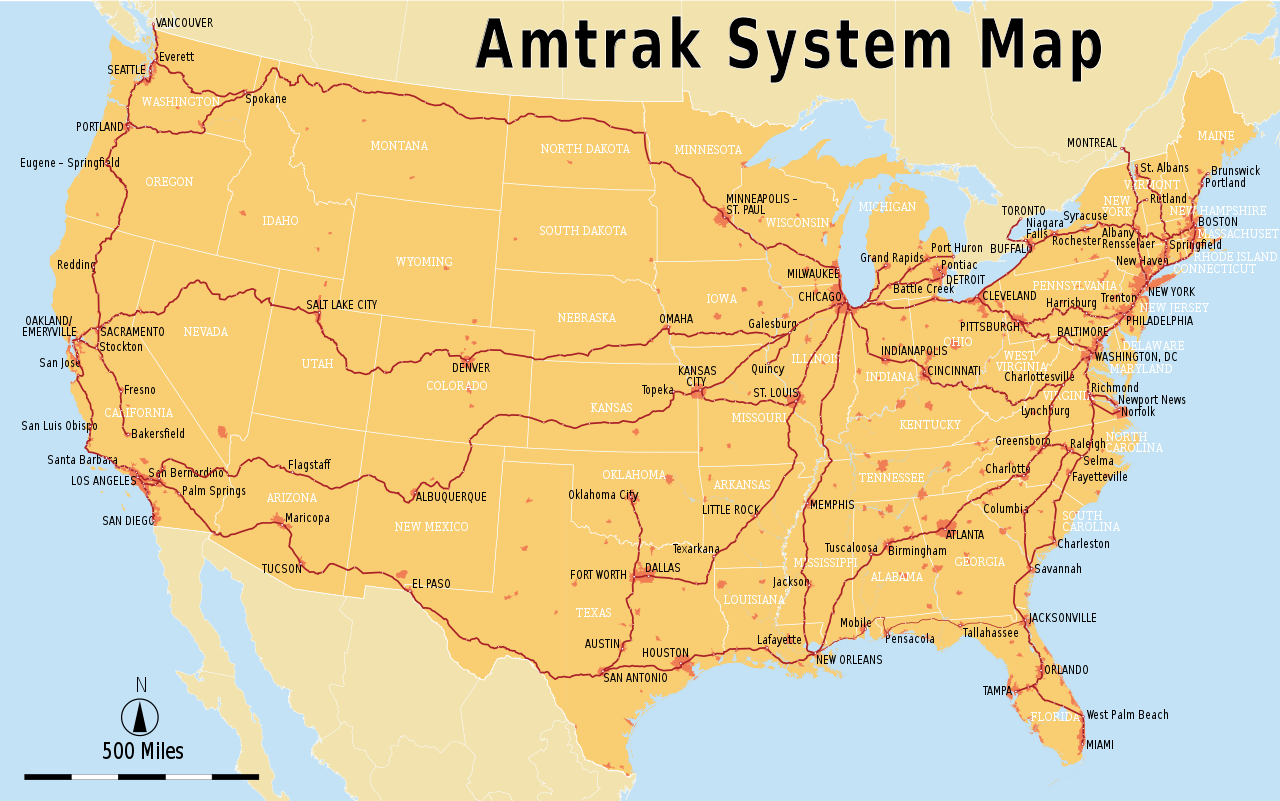micheal_can
Senior Member
Here are thee top 20 largest cites in the USA:I’m not your mother, look it up yourself. Here’s a map to get you started.

1 New York, New York[10] 8,344,910
2 Los Angeles, California 3,819,702
3 Chicago, Illinois 2,707,120
4 Houston, Texas 2,145,146
5 Philadelphia, Pennsylvania[11] 1,536,471
6 Phoenix, Arizona 1,469,471
7 San Antonio, Texas 1,359,758
8 San Diego, California 1,326,179
9 Dallas, Texas 1,223,229
10 San Jose, California 967,487
11 Jacksonville, Florida[12] 827,908
12 Indianapolis, Indiana[13] 827,609
13 Austin, Texas 820,611
14 San Francisco, California[14] 812,826
15 Columbus, Ohio 797,434
16 Fort Worth, Texas 758,738
17 Charlotte, North Carolina 751,087
18 Detroit, Michigan 706,585
19 El Paso, Texas 665,568
20 Memphis, Tennessee 652,050
https://en.wikipedia.org/wiki/Cities_and_metropolitan_areas_of_the_United_States
Of those, Only Columbus is not served by Amtrak.
Now, lets see the top 10 largest Canadian cities:
1 Toronto, Ontario 5,429,524
2 Montreal, Quebec 3,519,595
3 Vancouver, British Columbia 2,264,823
4 Calgary, Alberta 1,237,656
5 Edmonton, Alberta 1,062,643
6 Ottawa–Gatineau, Ontario/Quebec 989,657
7 Winnipeg, Manitoba 711,925
8 Quebec City, Quebec 705,103
9 Hamilton, Ontario 693,645
10 Kitchener-Waterloo-Cambridge, Ontario 470,015
https://en.wikipedia.org/wiki/List_of_the_100_largest_population_centres_in_Canada
Of those, Vancouver, Edmonton, and Winnipeg has Via, but not daily service.
Calgary is not even served.
If we go further to the next 10:
11 London, Ontario 383,437
12 Victoria, British Columbia 335,696
13 Halifax, Nova Scotia 316,701
14 Oshawa, Ontario 308,875
15 Windsor, Ontario 287,069
16 Saskatoon, Saskatchewan 245,181
17 St. Catharines–Niagara, Ontario 229,246
18 Regina, Saskatchewan 214,631
19 St. John's, Newfoundland and Labrador 178,427
20 Kelowna, British Columbia 151,957
Only London, Oshawa and Windsor are served daily.
Halifax and Saskatoon are the only ones with some, but not daily Via service.
Victoria, Regina, St John's and Kelowna doesn't have any. Two of them may be on islands, but less than 10 years ago, Victoria did have Via service.
So, Amtrak IS something Via could model.






